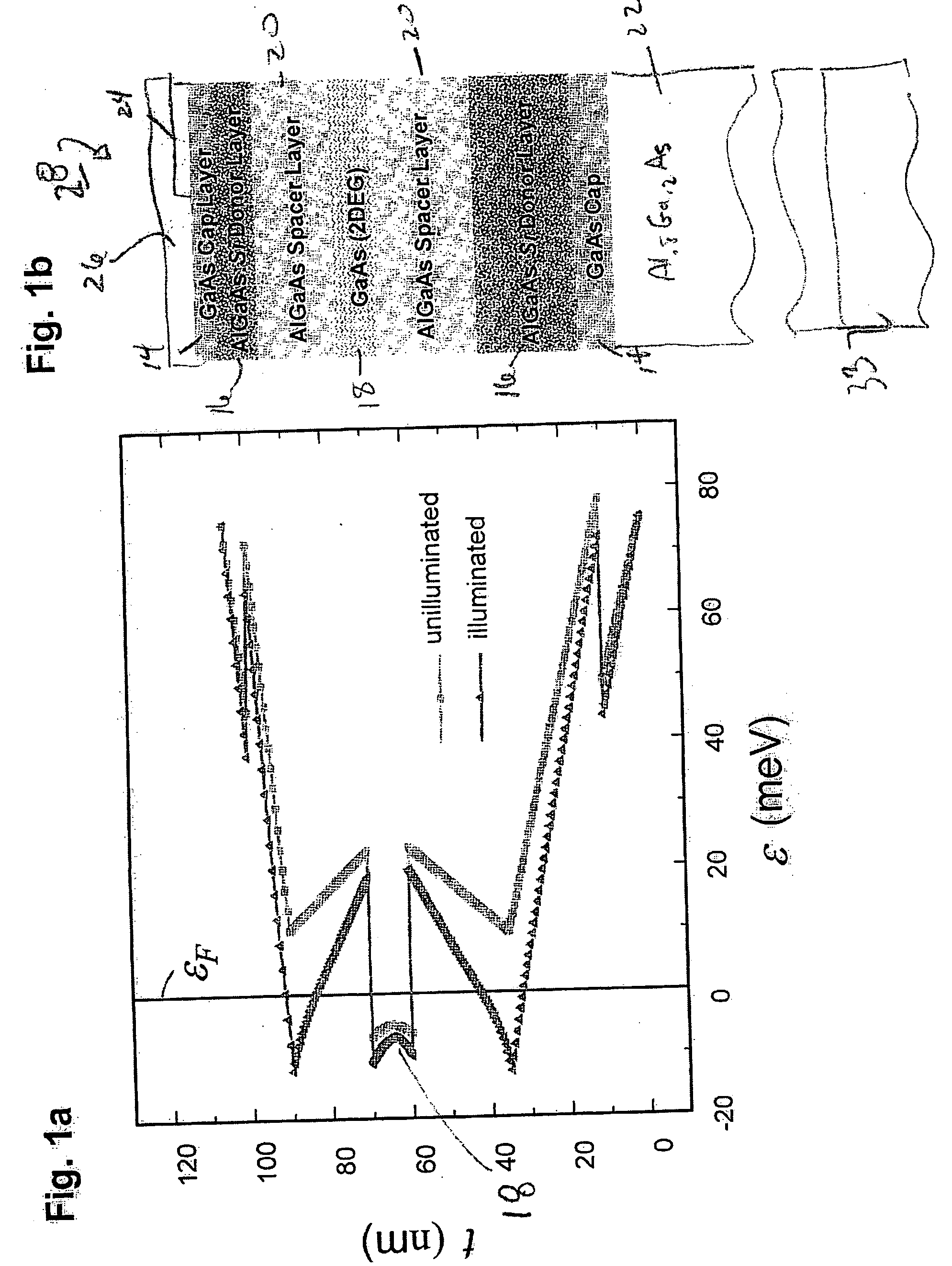Apparatus and method for vacuum-based nanomechanical energy force and mass sensors
a vacuum-based nanomechanical and sensor technology, applied in the direction of interia force acceleration measurement, instruments, impedence networks, etc., can solve the problem of increasing the difficulty of maintaining the necessary aspect ratios for responsive transduction required to achieve the fundamental sensitivity limits, the detection sensitivity of nanoelectromechanical devices is in general limited, and the majority of these techniques become insensitive at the sub-micron scale. to achieve the effect of inducing usable nonlinearity
- Summary
- Abstract
- Description
- Claims
- Application Information
AI Technical Summary
Benefits of technology
Problems solved by technology
Method used
Image
Examples
numerical example
[0345] Typical low-noise RF amplifiers with input impedance RL=50 Ω have noise figures ranging from 0.3 dB to 1.0 dB for a source impedance of 50 Ω. In the two-port detection circuit described in this report, the amplifier sees 50 Ω through the impedance transformation, so the noise figure (NF.) can be converted to a power spectral density by the following equation:
SVα=(4kBTRL)10NF / 10dB
[0346] This gives an effective noise voltage SVα across 50 Ω, which includes both the voltage and current noise at the amplifier's input. For the quoted noise figures, the amplifier noise voltage ranges from 0.93 nV / {square root}Hz to 1.0 nV / {square root}Hz, assuming the amplifier is at room temperature. For a cryogenic amplifier at 4K, the noise level drops to 0.12 nV / {square root}Hz.
[0347] Consider a silicon beam of square cross-section with the following electrical parameters: λ=0.1, RL=50 Ω, σ=1.6×107 / Ω-m, in a magnetic field B=8T. The two-port detection sensitivity is: SX(2)m=1.72 × 10-6...
PUM
 Login to View More
Login to View More Abstract
Description
Claims
Application Information
 Login to View More
Login to View More - R&D
- Intellectual Property
- Life Sciences
- Materials
- Tech Scout
- Unparalleled Data Quality
- Higher Quality Content
- 60% Fewer Hallucinations
Browse by: Latest US Patents, China's latest patents, Technical Efficacy Thesaurus, Application Domain, Technology Topic, Popular Technical Reports.
© 2025 PatSnap. All rights reserved.Legal|Privacy policy|Modern Slavery Act Transparency Statement|Sitemap|About US| Contact US: help@patsnap.com



